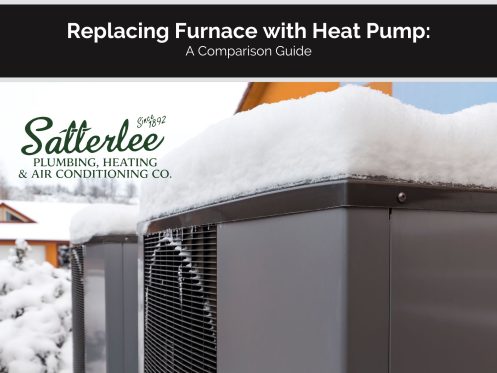Homeowners increasingly seek energy-efficient and environmentally friendly heating solutions. This is why many are considering replacing their traditional furnaces with modern heat pump systems. Let’s explore the benefits and considerations of making this switch. Furthermore, what should you consider when replacing furnace with heat pump systems?
Understanding Heat Pumps
Heat pumps are versatile systems that heats and cools your home by transferring heat from one location to another. Unlike furnaces that generate heat through combustion, heat pumps use electricity to move heat from the outside air or ground into your home during winter, and reverse the process for cooling in summer.
Replacing Furnace with Heat Pump: Efficiency and Cost Savings
One of the primary advantages of replacing furnace with heat pump is improved energy efficiency. Heat pumps can be up to three times more efficient than traditional heating systems, which translates to significant energy savings over time. While the initial investment for a heat pump system can be substantial, ranging from $5,000 to $20,000 depending on various factors, the long-term operational costs are often lower.
According to energy.gov, homes heated by heat pumps can expect to save an average of $500 per year compared to those heated by combustion-based systems. This efficiency is particularly notable when compared to oil furnaces, which typically have an annual fuel utilization efficiency (AFUE) rating lower than 79%.
Consistent Comfort
Heat pumps offer more consistent heating throughout your home. Unlike furnaces that switch on and off to maintain temperature, heat pumps continuously measure and adjust to existing temperatures, providing even warmth while using less energy.
Considerations for Cold Climates
While modern heat pumps are designed to function efficiently in most climates, their efficiency can decrease in extremely cold temperatures. In colder regions, it might be beneficial to have a backup heating system for those exceptionally frigid days. Some homeowners opt for a dual system that includes both a heat pump and a furnace to achieve optimal comfort and energy savings in varying weather conditions.
Installation and Maintenance
The installation process for replacing a furnace with a heat pump typically takes 1 to 3 days. However, it depends on the complexity of the job and any necessary modifications to your home. It’s crucial to ensure that your existing ductwork is compatible with a heat pump system and that your home is properly insulated.
Similar to a furnace, heat pumps require regular maintenance to ensure optimal performance. It’s recommended to schedule an HVAC tune-up twice a year. Once before the heating season and once before the cooling season. Regular filter changes and professional inspections will keep your heat pump running efficiently for years to come.
Government Incentives
To encourage the adoption of more energy-efficient heating solutions, many governments offer incentives for homeowners switching to heat pumps. These can significantly offset the initial installation costs.
Satterlee Heat Pump Installation Services
Replacing your furnace with a heat pump is a significant decision that offers numerous benefits. From increased energy efficiency and cost savings to reduced environmental impact and consistent comfort, heat pumps present an attractive alternative to traditional heating systems. While the upfront costs can be substantial, the long-term savings make it a worthwhile investment.
If you’re considering switching, consult with our team of HVAC professionals! We can assess your home’s specific needs and provide tailored recommendations. With proper planning and installation, a heat pump can provide an efficient, comfortable, and eco-friendly heating and cooling solution for your home for years to come.


